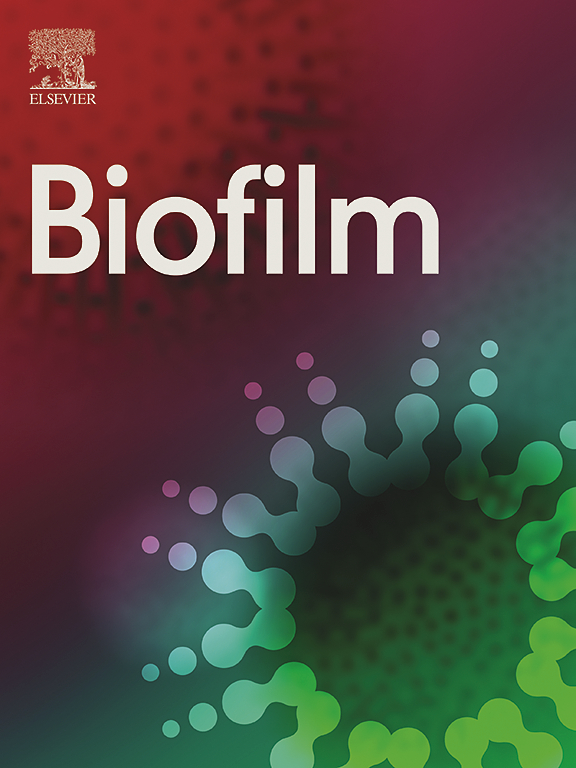Magnetic, conductive nanoparticles as building blocks for steerable micropillar-structured anodic biofilms
IF 4.9
Q1 MICROBIOLOGY
引用次数: 0
Abstract
In bioelectrochemical systems (BES), biofilm formation and architecture are of crucial importance, especially for flow-through applications. The interface between electroactive microorganisms and the electrode surface plays an important and often limiting role, as the available surface area influences current generation, especially for poor biofilm forming organisms. To overcome the limitation of the available electrode surface, nanoparticles (NPs) with a magnetic iron core and a conductive, hydrophobic carbon shell were used as building blocks to form conductive, magnetic micropillars on the anode surface. The formation of this dynamic three-dimensional electrode architecture was monitored and quantified in situ using optical coherence tomography (OCT) in conjunction with microfluidic BES systems. By cyclic voltammetry the assembled three-dimensional anode extensions were found to be electrically conductive and increased the available electroactive surface area. The NPs were used as controllable carriers for the electroactive model organisms Shewanella oneidensis and Geobacter sulfurreducens, resulting in a 5-fold increase in steady-state current density for S. oneidensis, which could be increased 22-fold when combined with Poly(3,4-ethylenedioxythiophene)-poly(styrenesulfonate) (PEDOT:PSS) aggregates. In the case of G. sulfurreducens, the steady-state current density was not increased, but was achieved four times faster. The study presents a controllable, scalable and easy-to-use method to increase the electrode surface area in existing BES by applying a magnetic field and adding conductive magnetic NPs. These findings can most likely also be transferred to other electroactive microorganisms.
磁性导电纳米粒子作为可转向微柱结构阳极生物膜的构建模块
在生物电化学系统(BES)中,生物膜的形成和结构至关重要,尤其是在流动应用中。电活性微生物与电极表面之间的界面起着重要的作用,而且往往是限制性的,因为可用的表面积会影响电流的产生,特别是对生物膜形成较差的生物而言。为了克服可用电极表面的限制,研究人员使用具有磁性铁芯和导电疏水碳壳的纳米颗粒(NPs)作为构件,在阳极表面形成导电磁性微柱。利用光学相干断层扫描(OCT)和微流体 BES 系统对这种动态三维电极结构的形成进行了原位监测和量化。通过循环伏安法发现,组装后的三维阳极延伸具有导电性,并增加了可用的电活性表面积。这些 NPs 被用作电活性模式生物 Shewanella oneidensis 和 Geobacter sulfurreducens 的可控载体,使 S. oneidensis 的稳态电流密度增加了 5 倍,当与聚(3,4-亚乙二氧基噻吩)-聚(苯乙烯磺酸)(PEDOT:PSS)聚合体结合使用时,电流密度可增加 22 倍。在硫化甘油杆菌的情况下,稳态电流密度并没有增加,但却快了四倍。该研究提出了一种可控、可扩展且易于使用的方法,通过施加磁场和添加导电磁性 NPs 来增加现有 BES 的电极表面积。这些发现很可能也可以应用于其他电活性微生物。
本文章由计算机程序翻译,如有差异,请以英文原文为准。
求助全文
约1分钟内获得全文
求助全文

 求助内容:
求助内容: 应助结果提醒方式:
应助结果提醒方式:


